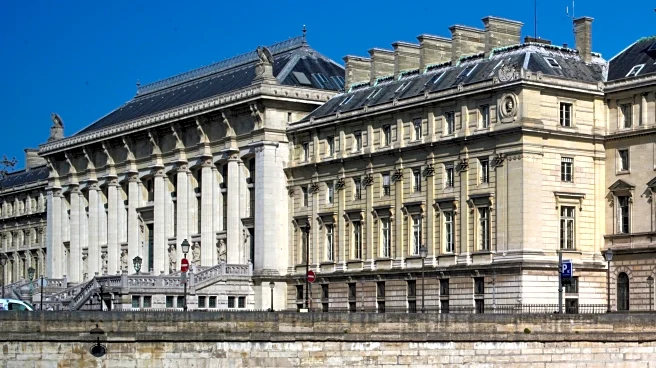What's Happening?
A new book by art historian Jennifer Dasal, titled 'The Club', explores the history of the American Girls' Club in Montparnasse, Paris. Established in 1893 by Elisabeth Mills Reid, the wife of the U.S.
ambassador to France, the club provided a supportive environment for female American artists. The club offered affordable accommodation and meals, allowing women to pursue their artistic dreams in a city renowned for its art scene. Despite the challenges faced by women in the art world at the time, the club became a nurturing space for many aspiring artists. Notable figures such as Anne Goldthwaite and Meta Vaux Warrick Fuller were associated with the club, although Fuller faced racial discrimination upon her arrival. The club's activities ceased with the onset of World War I, but its legacy continues to inspire.
Why It's Important?
The American Girls' Club in Paris played a crucial role in supporting female artists during a time when opportunities for women were limited. By providing a space where women could live and work, the club challenged societal norms and contributed to the advancement of women in the arts. The club's history highlights the ongoing struggle for gender equality in creative fields and underscores the importance of supportive communities in fostering artistic talent. The book 'The Club' not only resurrects the memory of this important institution but also serves as a reminder of the courage and determination of the women who defied the odds to pursue their passions.
What's Next?
The book 'The Club' by Jennifer Dasal is expected to spark renewed interest in the history of women in the arts and the challenges they faced. It may lead to further research and discussions about the contributions of female artists and the importance of creating inclusive spaces in the art world. The story of the American Girls' Club could inspire contemporary initiatives aimed at supporting underrepresented groups in the arts, ensuring that the legacy of the club continues to influence future generations.
Beyond the Headlines
The story of the American Girls' Club also touches on issues of racial discrimination, as seen in the experience of Meta Vaux Warrick Fuller. This aspect of the club's history highlights the intersectionality of gender and race in the struggle for equality. The book's exploration of these themes may encourage a broader conversation about diversity and inclusion in the arts, prompting institutions to reflect on their practices and policies.














